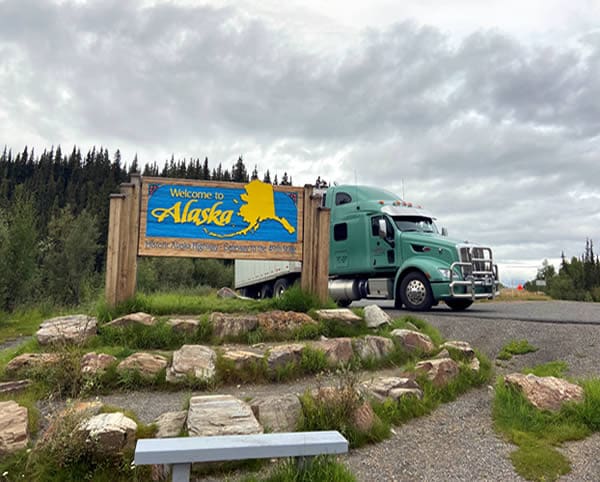
At 49th Freight we understand that shipping to Alaska can be challenging. We have observed that it can be routine to route freight through Seattle so it can be put on a barge or through Tacoma so it can be put on a steam ship. We, as businesspeople in Alaska, are accustomed to these modes of transportation and likely have routine ordering systems in place to accommodate them. However, here at 49th Freight we have discovered that over-the-road, direct trucking can be an economical option. Below are characteristics of freight where over-the-road shipping should be considered.
On average, trucking rates from the lower 48 to Alaska start at $3/mile and go up from there. Rates fluctuate based on the following factors:
A single driver can safely accomplish approximately 500 miles per day and a little more when driving through the northern parts of Canada. This results in delivery times to Alaska of 7-10 days from just about any part of the country.
The alternative to over-the-road trucking directly to Alaska is to truck shipments to Seattle or Tacoma, transload the shipment onto the barge or steam ship, await the arrival of the vessel in Alaska and plan for delivery via truck to final destination or customer pickup. The average ocean shipment time can range from 4 to 10 days plus your transport time to get from the origin to Seattle or Tacoma then to final delivery. Considering the increased chance of damage or loss through additional handling (the transload from over–the-road equipment to the ocean equipment) and the sailing and delivery times, we argue that if your shipment originates more than 3500 miles from its Alaska delivery point, it could be more economical to truck it over-the-road.
On the Alaska Highway system, it is common to see trucks hauling two trailers at one time (“hauling doubles”). Per regulation with this configuration, the truck cannot exceed 96’ in total - truck bumper to the end of the last trailer. The max load is usually accomplished by hauling two 40’ trailers. A single 40’ trailer or van can hold 20 standard (48”) pallets.
In the lower 48, the common length of a dry van, flatbed or step deck trailer is 53’. A 53’ trailer or van can hold 26 standard pallets. Utilizing 53’ equipment for shipments to Alaska will allow customers to ship more per trailer load proving to be a great value to customers.
As briefly mentioned, transloading means additional handling which can increase the risk of damage (including loss) and labor expenses (often times built into the shipping rate). Trucks inbound to Seattle or Tacoma are offloaded and then re-loaded onto the barge or steam ship.
Alaska has a great, reliable option of transporting goods via barge or steam ship and as lifelong residents, we greatly value this option. It works well for the steady delivery of essential goods which are predictable and ordered in a timely manner.
Over-the-road trucking into Alaska has several benefits for customers. While it may not always be less expensive than going via the water, assurance that you will receive materials by a required date (often with truck tracking) can be of great value for many Alaskan businesses. Not to mention, avoiding extra handling is also a perk. In short, over-the-road services are worth exploring for shipments when the origin is over 3500 miles away from Alaska, requires greater that 40’ equipment, and should not be transloaded to other equipment while in transit.